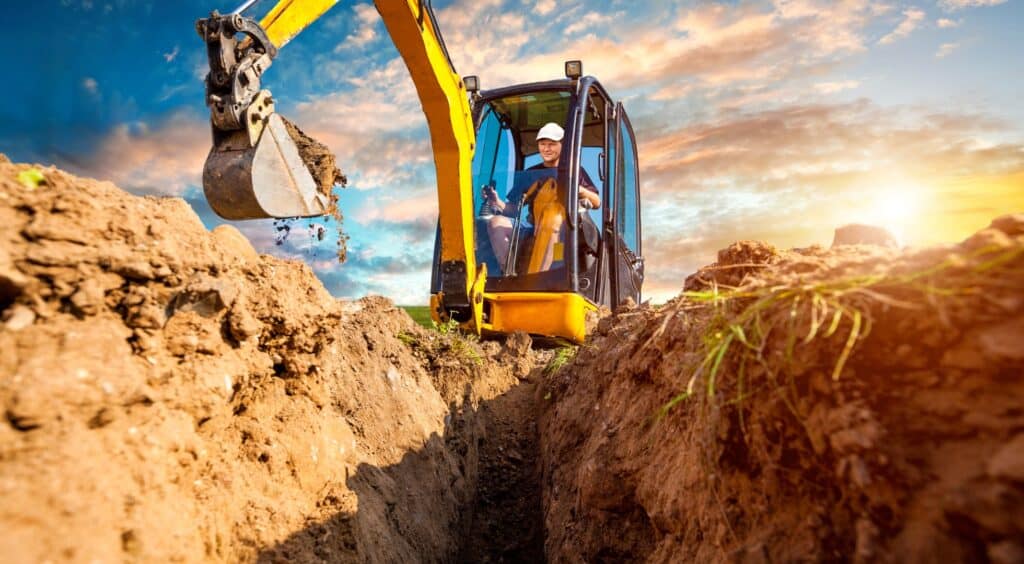Mini excavators are popular construction machines commonly used for digging. How deep can a mini excavator dig? These are smaller than standard excavators and ideal for working in limited spaces or on smaller job sites. If you choose a small excavator for your next project, you should know how deep a mini excavator can dig.
How Deep Can a Mini Excavator Dig?
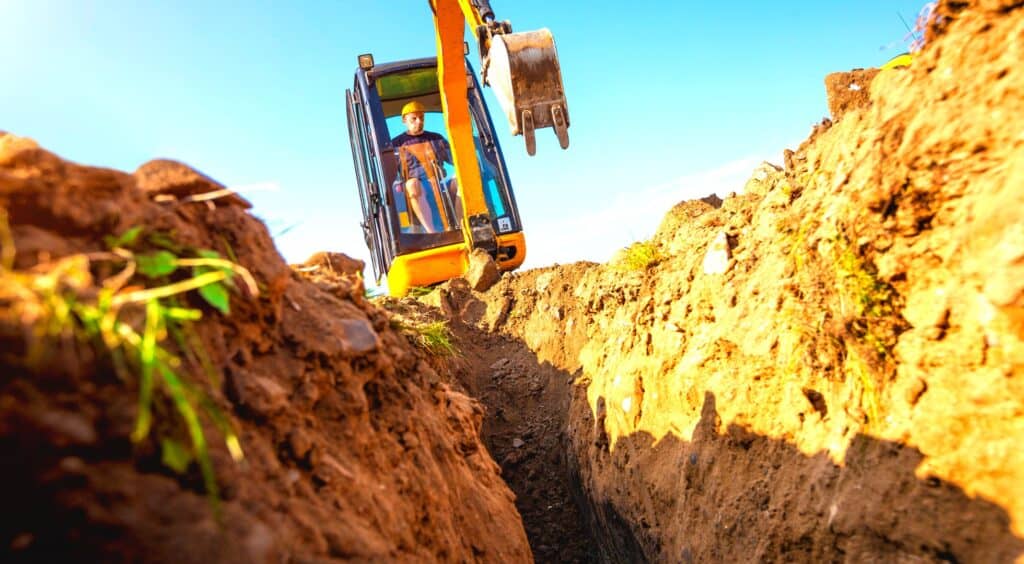
When digging on smaller construction sites, excavators are commonly used to work at the edges of trenches between 1.5 and 3.0 meters deep. A small excavator that can reach down a 4.2-meter hole in the ground will serve their needs very well. However, a 2-meter depth must be acceptable for an everyday compact digger.
Despite the machine’s capabilities, operators often avoid pushing their equipment to the limit. They understand the value of having a safety factor and will use only 60% of the excavator’s range. It eliminates the risk of tipping and ensures that the digging attachment reaches the bottom of the trench. There is no point in having a machine with a 4-meter range if the digging attachment can only scratch the surface of the hole.
Using a conservative approach, the operator can achieve maximum efficiency without compromising safety or the quality of the work. The mini excavators can reach impressive depths; operators must exercise caution and use their equipment within safe limits.
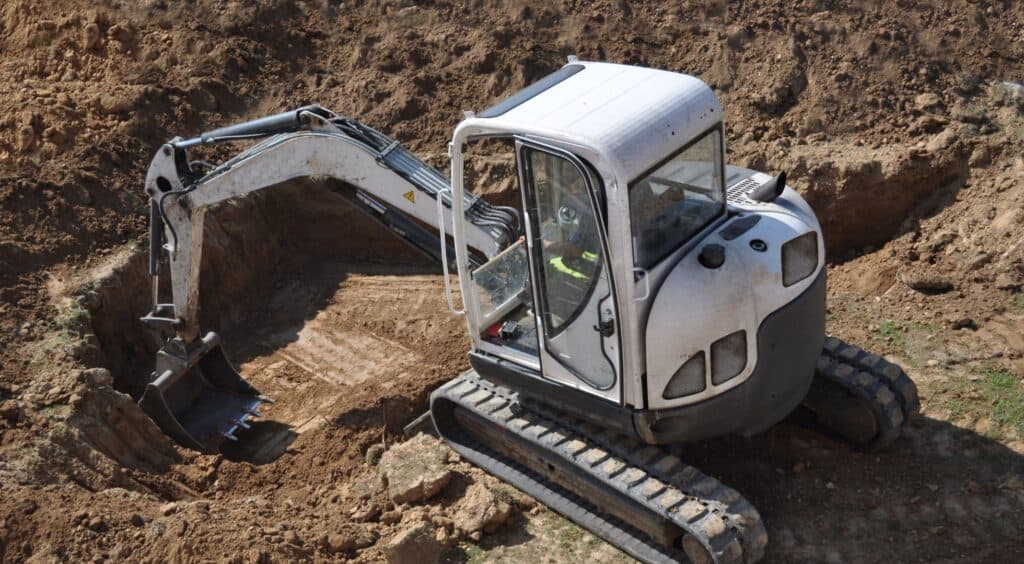
The depth that a mini excavator can dig depends on a few factors, including the size and weight of the machine, the length of its arm, and the type of soil or material it is digging through.
But small mini excavators with an operating weight of around 1.5 tons have a digging depth of approximately 5 to 6 feet. Larger compact excavators, with an operating weight of roughly 5 tons, can dig to depths of up to 15 feet. However, these figures are only estimates, and the actual depth that a mini excavator can dig will depend on the specific machine and job site conditions.
Factors that affect mini excavator digging depth

Several factors can affect the digging depth of a mini excavator.
Machine size and weight: The mini excavator’s size and weight will significantly impact its digging depth. Smaller machines are generally limited to shallower depths, while larger engines can dig deeper.
Arm length: The length of the mini excavator’s arm is also a crucial factor in determining how deep it can dig. Longer arms can reach deeper, allowing the machine to dig deeper.
Soil or material type: The soil you want to excavate can also affect the digging depth. Hard, compacted soil or rock will be more challenging to dig through than loose, soft soil and may limit the depth a mini excavator can reach.
Job site conditions: The conditions of the job site can also impact the digging depth. For example, if the mini excavator is working on a slope, digging to the machine’s maximum depth may not be safe.
Uses of mini excavators
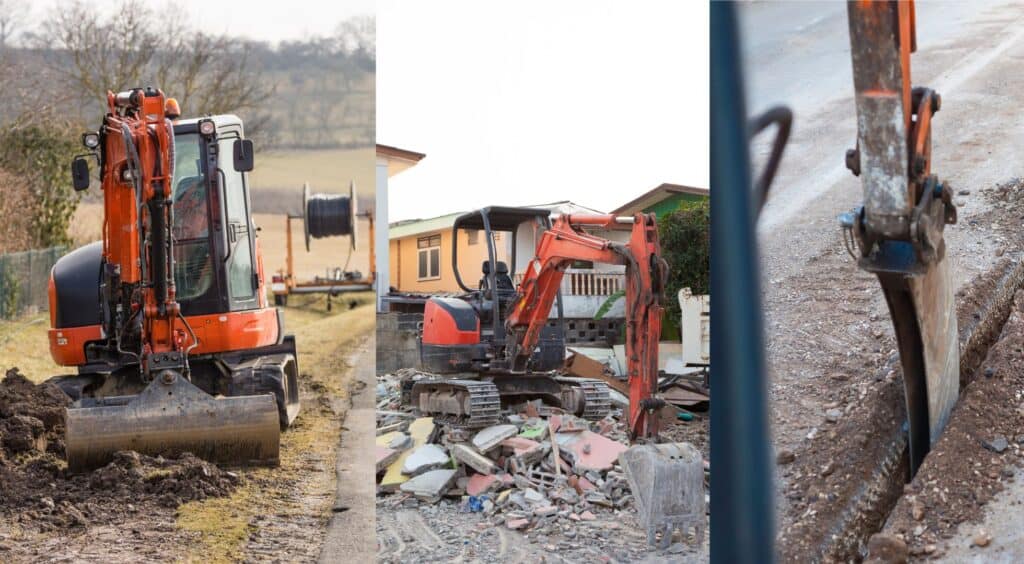
Mini excavators are versatile machines that use for a wide range of tasks. Some of the most common uses for small excavators include:
- Digging foundations and footings for buildings
- Excavating trenches for utilities such as water and sewer lines
- Digging ponds and other water features
- Clearing land for construction or landscaping projects
- Demolishing small structures such as sheds or garages
- Removing tree stumps and other significant obstacles
- Installing drainage systems
- Digging ditches for irrigation systems
- Excavating for pool installations
- Digging graves for burial sites
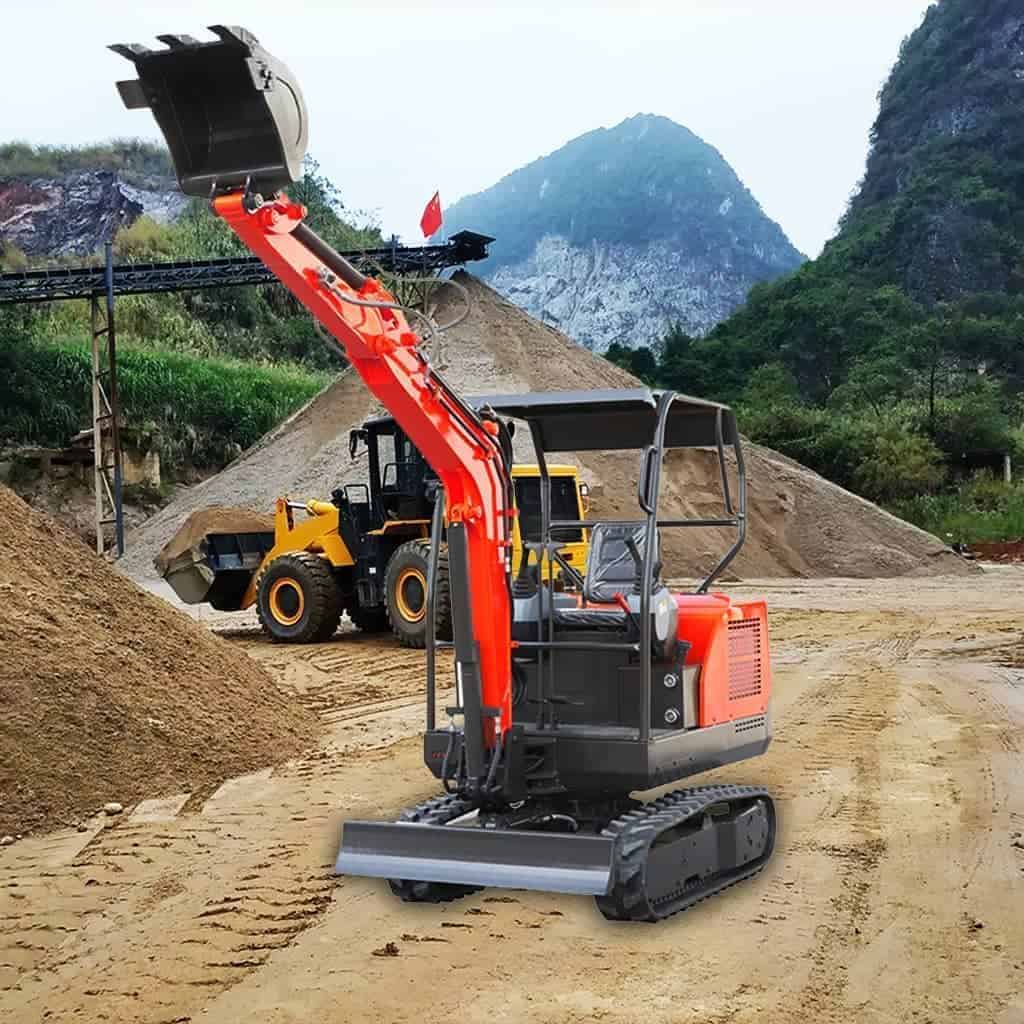
How can you get the Maximum Mini Excavator Digging Depth?
Weight
The machine’s weight also plays a significant role in determining its digging depth. Heavier excavators have more digging power and can dig deeper than a compact excavator. However, heavy machines may only suit some jobs, such as confined spaces or delicate terrain.
Power
The power of the machine’s engine is another crucial factor determining its digging depth. Mini excavators with more powerful engines can dig deeper and faster than those with less powerful engines. The digging depth for these machines usually ranges from 5 to 10 feet, the dump height between 6 and 11 feet, and the horsepower between 10 and 40.
Digging Capacity
The digging capacity of the mini excavator is another essential factor determining its digging depth. The ability of the machine’s bucket or attachment determines how much material it can excavate in a single pass. The mini excavator with more giant buckets or attachments can dig deeper faster than those with smaller ones.
Choose the Right Machine
The size and weight of the machine are critical factors that determine its digging depth. Choose an excavator that is suitable for the job and can handle the terrain and conditions of the work site.
Use the Right Bucket or Attachment
The size and capacity of the bucket or attachment also play a vital role in determining the machine’s digging depth. Use an appropriate bucket or attachment to handle the material you are excavating.
Maintain the Machine
Regular maintenance of the mini excavator is essential to keep your machine in good condition and ensure optimal performance. Check the machine’s fluids, filters, and belts regularly and replace them as needed.
Adjust the Machine’s Track Tension
The tension of the machine’s tracks can affect its digging depth. Too much tension can cause the tracks to slip, while too little tension can cause the tracks to come off. So you should Adjust the track tension according to the manufacturer’s specifications.
Choose the Right Digging Technique
The way you operate the machine can also affect its digging depth. Use the correct digging technique, such as a straight dig, V-ditch, or sloping dig, depending on the job and terrain.
Advantages of using a mini excavator
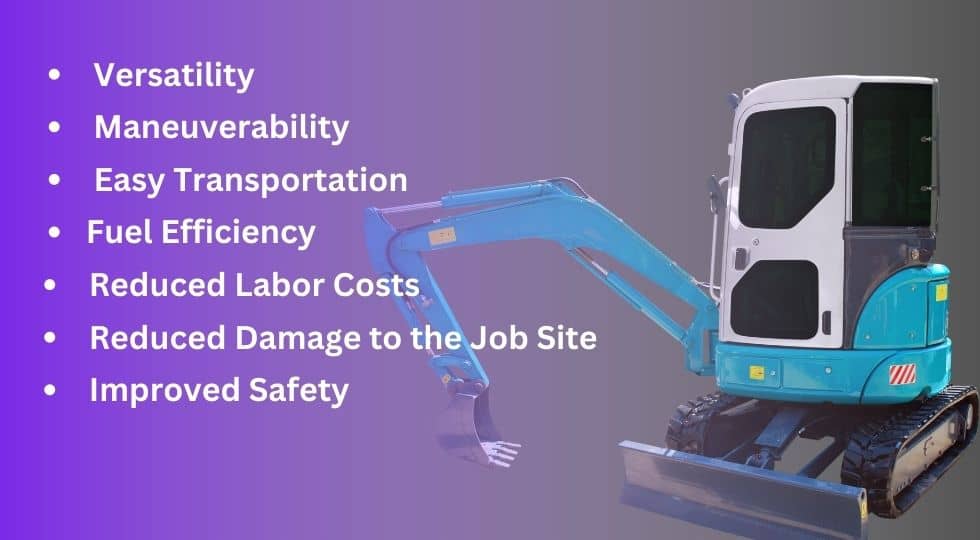
Versatility
Mini excavators are versatile machines that can perform a wide range of tasks. They come with various attachments, such as buckets, hammers, augers, and grapples, which can be quickly and easily switched out to perform different tasks. The versatility makes mini excavators a cost-effective and efficient choice for many businesses.
Maneuverability
Mini excavators are compact and lightweight, making them highly maneuverable. They can work in tight spaces, narrow job sites, and other areas where larger machines cannot go. The flexibility allows mini excavators to work in different terrains and conditions.
Easy Transportation
Mini excavators are designed for easy transportation. They can be quickly loaded onto a trailer or truck and transported to the job site. Their compact size also requires less storage space when not in use.
Fuel Efficiency
Mini excavators are generally more fuel-efficient than larger machines. They have smaller engines and use less fuel per hour of operation. The fuel efficiency translates into cost savings for businesses that use mini excavators regularly.
Reduced Labor Costs
Mini excavators are designed to be operated by a single person, reducing the need for additional labor. This feature saves businesses money on labor costs and improves job site efficiency by allowing one person to operate the machine and perform multiple tasks.
Reduced Damage to the Job Site
Mini excavators are designed to be gentle on job sites. They have rubber tracks that distribute their weight evenly, reducing the risk of damaging surfaces such as pavement, lawns, and other delicate terrains. It makes mini excavators ideal for landscaping and other jobs where surface damage must be minimized.
Improved Safety
Mini excavators are designed with safety in mind. They come with rollover protection systems, emergency shut-off switches, and backup alarms to ensure the operator’s and other’s safety on the job site. These safety features minimize the risk of accidents and injuries.

Conclusion
Mini excavators are versatile machines that can perform various tasks, including digging. The digging depth of a mini excavator depends on several factors. To maximize the digging depth of the mini excavator, you need to choose the suitable machine, use the right bucket or attachment, maintain the machine regularly, adjust the track tension, and use the correct digging technique. If you need more information, you can contact us.

